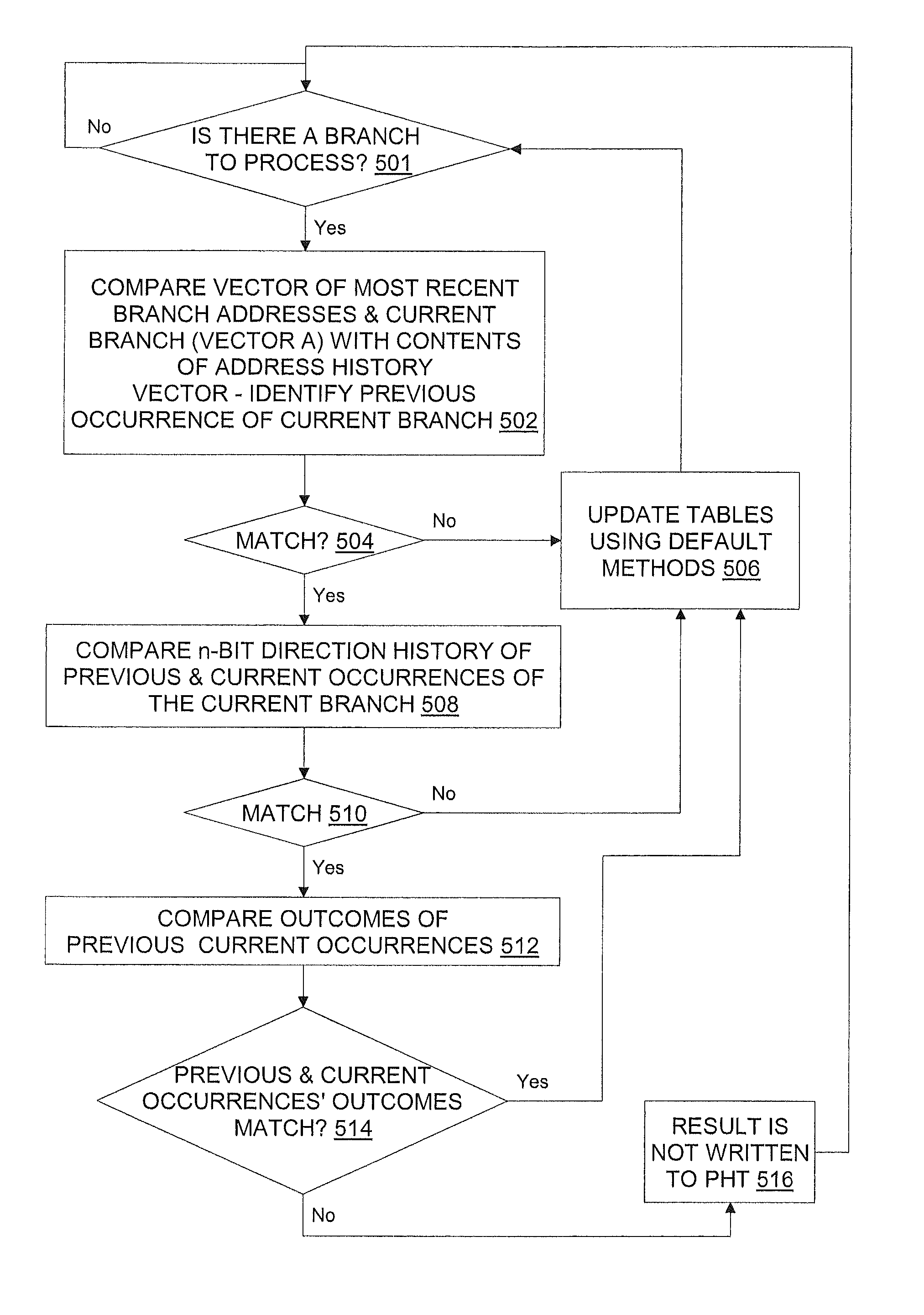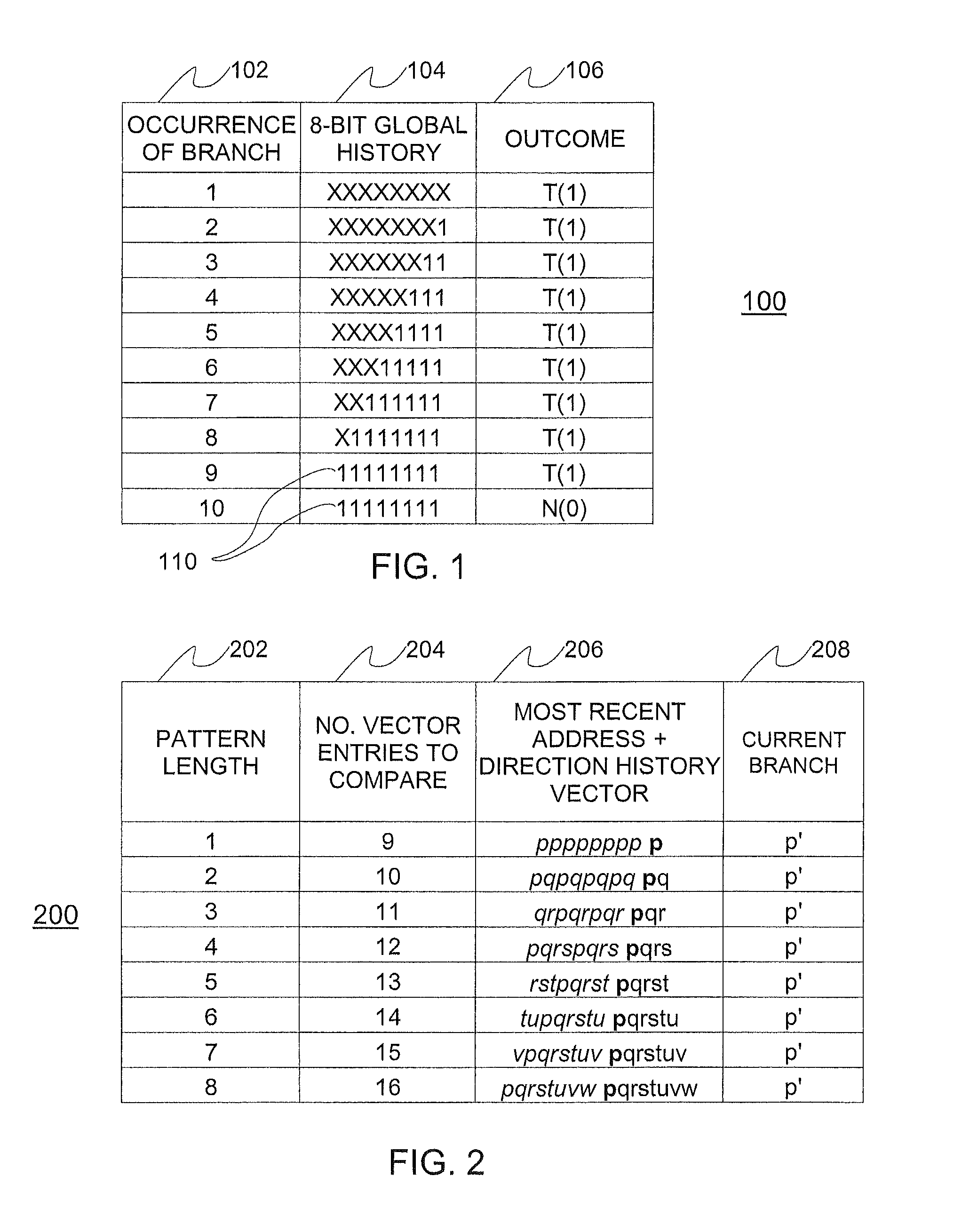State machine-based filtering of pattern history tables based on distinguishable pattern detection
a technology of state machine and pattern history, applied in the field of branch prediction, can solve the problems of inability to effectively correlate pht, inability to provide high accuracy for non-dominant branches, and cost-intensive implementation of pht in terms of chip area coverage and power consumption requirements
- Summary
- Abstract
- Description
- Claims
- Application Information
AI Technical Summary
Benefits of technology
Problems solved by technology
Method used
Image
Examples
Embodiment Construction
[0018]Exemplary embodiments relate to distinguishing reliable patterns in a pattern history table (PHT) from those that are unreliable in predicting branch behavior. The exemplary embodiments further include taking appropriate actions in response to the distinction. In one exemplary embodiment, the distinction between reliable and unreliable patterns may be determined once the current branch instruction is resolved and its direction known. In this embodiment, the unreliable pattern refers to one in which a previous occurrence of a branch shares the same pattern history as that of a current branch, but the outcomes of both occurrences are different. In another exemplary embodiment, an unreliable pattern may be determined at the time of branch prediction and before the current branch is resolved. In this embodiment, the unreliable pattern refers to one in which the previous and current branches occurrences' pattern history match, but the previous occurrence's outcome is either the sam...
PUM
 Login to View More
Login to View More Abstract
Description
Claims
Application Information
 Login to View More
Login to View More - R&D
- Intellectual Property
- Life Sciences
- Materials
- Tech Scout
- Unparalleled Data Quality
- Higher Quality Content
- 60% Fewer Hallucinations
Browse by: Latest US Patents, China's latest patents, Technical Efficacy Thesaurus, Application Domain, Technology Topic, Popular Technical Reports.
© 2025 PatSnap. All rights reserved.Legal|Privacy policy|Modern Slavery Act Transparency Statement|Sitemap|About US| Contact US: help@patsnap.com



